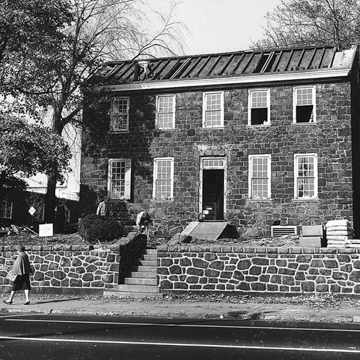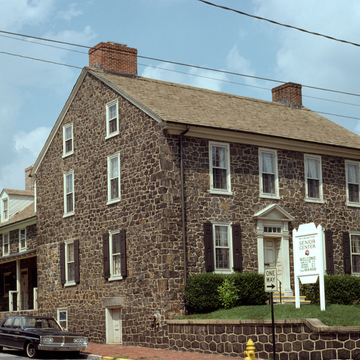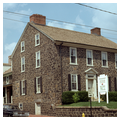In 1770, a decade after the first overshot mills were begun on the south bank of the Brandywine, James Marshall excavated a millrace on the north. With the granite thus made available he built this five-bay, two-story Georgian house, which Thomas Lea, prominent miller and banker, bought in 1785. It survives as the oldest dwelling in the vicinity, emblematic of the prosperity that water-powered industrialization brought. Old Brandywine Village, Inc., was organized to buy the threatened structure in 1963. The group undertook a restoration in which nineteenth-century accretions—fully half of the building—were demolished and interiors were returned to a colonial appearance. Original partition walls were identified by ghost-marks on the floors. The old exterior doorframe was discovered beneath one from 1830. In a then-pioneering preservation strategy, adaptive reuse, the house was turned over to the Junior League of Wilmington in 1965 as a headquarters. The house has variously been known as the Lea-Derickson House and the Harvey-Derickson-Bringhurst House.
You are here
Thomas Lea House
If SAH Archipedia has been useful to you, please consider supporting it.
SAH Archipedia tells the story of the United States through its buildings, landscapes, and cities. This freely available resource empowers the public with authoritative knowledge that deepens their understanding and appreciation of the built environment. But the Society of Architectural Historians, which created SAH Archipedia with University of Virginia Press, needs your support to maintain the high-caliber research, writing, photography, cartography, editing, design, and programming that make SAH Archipedia a trusted online resource available to all who value the history of place, heritage tourism, and learning.





